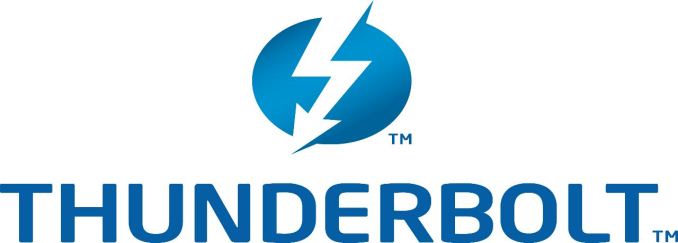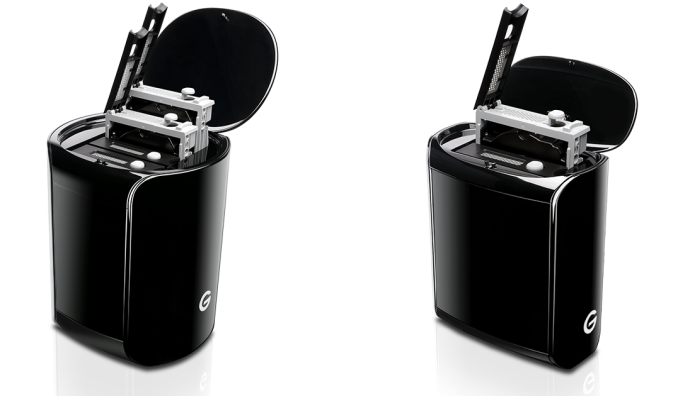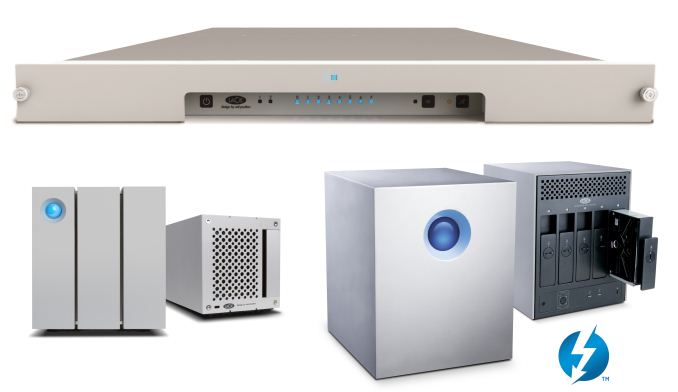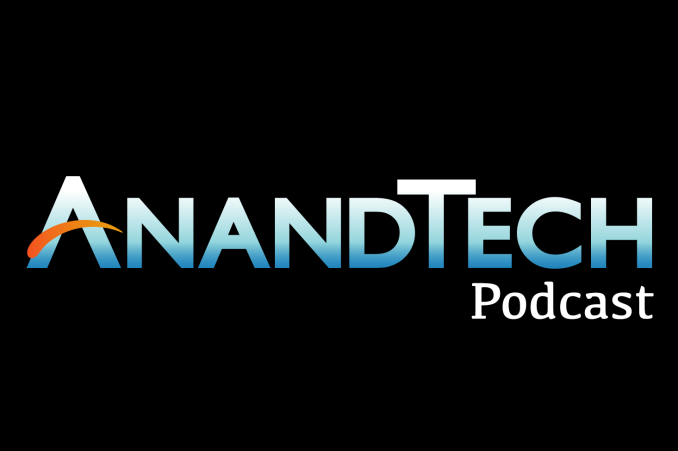Results 3,791 to 3,800 of 12096
Thread: Anandtech News
-
04-08-14, 07:30 AM #3791
Anandtech: The AMD Radeon R9 295X2 Review
Launching today is AMD's Radeon R9 295X2. After much consumer speculation and more than a few teasers, AMD is releasing their long-awaited Hawaii-powered entry to their dual-GPU series of cards. With Hawaii AMD has a very powerful (and very power hungry) GPU at their disposal, and for its incarnation in the R9 295X2 AMD is going above and beyond anything they’ve done before, making it very clear that they’re playing to win.
More...
-
04-09-14, 08:00 AM #3792
Anandtech: The Desktop Kabini Review Part 1: AMD Athlon 5350 (AM1) Tested
Last month AMD announced their Socketed AM1 Kabini platform to focus on the low-end desktop market where low cost, low power and upgradability are important factors for system integrators. The socketed Kabini APUs build on those released for mobile last year, and today is officially launch day for four APU models under the Athlon and Sempron ranges. AMD is aiming for an APU and motherboard system cost of $60-$90 with an APU TDP of 25W. We square the Athlon 5350 against the competition.
More...
-
04-10-14, 05:30 AM #3793
Anandtech: Plextor M6S & M6M (256GB) Review
Continuing our spring full of new SSDs, the next drives under the scope are Plextor's M6S and M6M. Both drives were already showcased at CES this year but after a series of delays the release was pushed to April, which brings us to this review. Similar to the M5 series, the M6S is Plextor's mainstream offering with a focus on price, whereas the M6M is the mSATA variant of the M6S. Read on to find out how Plextor's latest drives perform.
More...
-
04-10-14, 05:30 PM #3794
Anandtech: Corsair Raptor K40 Keyboard Review
A few years ago, we witnessed the return of mechanical keyboards and ever since then companies have been fighting a marketing war about whose keyboard is better. The truth however is that mechanical keyboards, even in their least expensive implementations, remain fairly expensive and such an investment doesn't always makes sense to users. For you that appreciate a good keyboard but do not care about whether it has mechanical key switches or not, Corsair's Raptor K40 is an advanced gaming keyboard that uses rubber dome switches. Read on for our full review.
More...
-
04-11-14, 05:01 AM #3795
Anandtech: G-Technology and LaCie Roll Out Thunderbolt 2 Lineup
Thunderbolt is Intel’s high-bandwidth, do-everything connector, designed as a potential future path for all things external to a system - displays, USB devices, external storage, PCI Express, and even graphics cards. The first version of Thunderbolt supported up to 10Gb/s bandwidth (uni-directional) for each port (double that of USB 3.0, but at a much higher implementation cost). Thunderbolt 2 doubled the bandwidth to 20 Gbps per port (bi-directional) by combining the four 10Gb/s channels into two 20Gb/s channels, thus enabling support for 4Kp60 raw video transfer (which may need up to 15 Gbps). Motherboards with Thunderbolt 2 certification started rolling out in the second half of 2013, but peripherals capable of taking advantage of Thunderbolt 2 were quite rare.
We were expecting a number of Thunderbolt 2 products at CES, but were able to get hands-on time with only a pre-production sample of the LaCie Little Big Disk Thunderbolt 2. With 4K being one of the main drivers for Thunderbolt 2, manufacturers have used the time around the 2014 NAB Show (the B2B media / broadcast trade show) to add new members to their Thunderbolt portfolio.
One of the interesting aspects to note is that the cutting-edge Thunderbolt products are being marketed through the premium brands/subsidiaries of the two major hard drive manufacturers. Representing Western Digital, we have G-Technology, a division of HGST (a wholly owned subsidiary of WD). Seagate is represented by LaCie. These products are also equipped with the latest high-capacity 6TB enterprise class drives.
G-Technology STUDIO SERIES:
G-Technology introduced two members, the G-SPEED Studio and the G-RAID Studio. The G-SPEED is a four-bay solution with a built-in RAID controller (hardware RAID) and dual Thunderbolt 2 ports (for daisy chaining). RAID 0,1,5 and 10 are supported, and the drives are user-replaceable. Performance tops out at 660 MBps in RAID 0. Pricing ranges from $2200 for the 12TB version to $3600 for the 24TB version.
The G-RAID is a 2-bay solution with hardware RAID (user-selectable RAID 0,1 or JBOD). It features two Thunderbolt 2 ports for daisy chaining and performance tops out at 360 MBps in RAID 0. Pricing ranges from $650 for the 4TB version to $1500 for the 12TB version.
Both products claim compatibility with both Mac OS 10.9+ and Windows 7+. They will be available in May and carry a 3-year warranty.
LaCie 2BIG, 5BIG and 8BIG RACK:
LaCie announced three Thunderbolt 2 products at the 2014 NAB. The 2BIG is a two-bay hardware RAID unit similar to the G-RAID, but, in addition to the Thunderbolt 2 interfaces, it also sports a USB 3.0 port. With two 6TB 7200rpm drives in RAID 0, LaCie claims speeds up to 420 MBps.
The 5BIG is a 5-bay hardware RAID unit with two Thunderbolt 2 ports (for daisy chaining). Equipped with 6TB Seagate hard drives, it can hit up to 1050 MBps. The 8BIG RACK is a 1U rackmount solution and provides up to 48TB of direct attached storage. LaCie claims speeds of up to 1330 MBps with this unit.
While the 2BIG enjoys Windows compatibility, thanks to the USB 3.0 port, LaCie is still working on Windows support for the other models (They are currently Mac OS 10.8.5+ only). All units have hot-swappable drives. Availability is slated for this quarter, and pricing is yet to be announced.
Before closing up this coverage, mention must also be made of Western Digital's My Passport Pro (launched at MacWorld). This bus-powered model is based on Thunderbolt (the first generation) and sports two 2.5" drives. There are two models, one with 2x 1TB drives and another with 2x 2TB drives. Drives can be configured in RAID 0,1 or JBOD. The units appear to be compatible with Macs only. Pricing comes in at $300 for the 2TB version and $450 for the 4TB version.
More...
-
04-11-14, 06:04 AM #3796
Anandtech: QNIX QX2710LEDDport Review
The best thing to happen to the computer monitor marketplace has been the introduction of inexpensive QuadHD displays from South Korea. At a time when a $700 monitor was considered cheap in the United States, these were available on Ebay for around $300 and utilized the same panel, though often a lower grade one. The introduction of these displays forced mainstream vendors in the USA to introduce more affordable models, and saw other vendors introduce more affordable products as well. Now we have decent quality panels at far more affordable prices, and while not perfect they can provide a good overall value. Today we look at the QNIX QX2710LEDDport and see how it compares to other 27-inch displays.
More...
-
04-14-14, 07:30 AM #3797
Anandtech: Quantenna Announces Development of 10G Wi-Fi 802.11ac Chipset
At the beginning of 2012 Broadcom announced its first 802.11ac chipsets under the banner of 5G (5th generation) WiFi. Since then we've seen the latest high end notebooks adopt 802.11ac, as well as a handful of flagship smartphones and tablets. The first generation of 802.11ac devices brought 80MHz channels and 256-QAM to a 5GHz interface that enabled real transfer speeds of as much as 600/900Mbps (TCP/UDP) for a 3-antenna/3-stream solution.
We saw Wave2 chipsets being introduced by Quantenna at CES and, recently, Qualcomm. Recent draft amendments have enabled a few optional (WiFi Alliance certified) features:
1) 8-stream configurations (up from 3-stream previously)While Broadcom made a big splash with the 5G branding, Quantenna is taking the lead this time around with 10G. By taking advantages of MU-MIMO and putting in support for 8 spatial streams, Quantenna hopes to deliver speeds of up to 10 Gbps . Quantenna's massive 8x8 MIMO promises reduced interference while handling multiple devices simultaneously. While the 4x4 solution we covered at CES is expected to go into mass production later this year, the 8x8 chipset is expected to arrive in 2015.
2) up to 160MHz channels (up from 80MHz) (Wave2 only), and
3) Multi-user MIMO (MU-MIMO) (Wave2 only)
Quantenna also took the opportunity of this development announcement to reiterate design wins / partnerships with Asus (consumer router, AC87U), Texas Instruments (enterprise and small cell LTE base stations), STMicro (SoC offerings) and Mimosa (outdoor wireless solutions).
8x8 802.11ac solutions may appear to be an overkill for home usage (few clients and none with more than two spatial streams), but they are definitely a great solution for wireless bridges and enterprise access points. Reliable high-range 10G Wi-Fi also has the ability to open up new applications. Beyond the chip design challenges that Quantenna aims to solve, system builders also have to handle power, anternna placement and other RF issues before 8x8 802.11ac-based products can hit the market.
More...
-
04-14-14, 09:30 PM #3798
Anandtech: Windows Phone 8.1 Review
I was an early fan of Windows Phone 7. I remember completely switching over to the platform for about a month back in 2010, and being relatively happy. It wasn’t until I needed tethering support (which didn’t exist in the first release of WP7) that I had to move away. Unfortunately, Microsoft’s software and hardware update cadence for Windows Phone couldn’t pull me back.
In its first three years of existence, Windows Phone received roughly the same number of major updates as Android and iOS. From 2010 - 2013, Google took Android from Gingerbread to KitKat, Apple revved iOS from version 4 to 7, and Microsoft gave us Windows Phone 7, 7.5 and 8.0. At best, you can consider the software release cadence competitive. At worst, it’s not enough. Windows Phone started behind both Android and iOS. To come out ahead, Windows Phone updates had to be more substantive, more frequent or both.
The same could be said about hardware. Microsoft lagged behind Apple and Google to dual-core, 28/32nm silicon, higher resolution displays, and LTE support among other things. Although the situation has improved over the past year, if the goal is to take the #1 or #2 spot, the upgrade cadence needs to be more aggressive.
It always felt like the point of Windows Phone was to be a midpoint between the flexibility of Android and iOS’ guarantee of a certain level of user experience. The platform was born during a time when Android was not yet ready for the mainstream (Gingerbread) as an iOS alternative, and when it still looked like the Windows licensing model would work for handset OEMs.
Today the world is a different place. Android is far more mature than it was in 2010, and it’s polished enough where it can easily be a solution for the enthusiast as well as the first time smartphone user. While Microsoft’s strategy in 2010 might have been one of eyeing the crown, in 2014 the strategy is more humble and focused.
Improve the platform, address issues both little and big, and continue to grow. That’s the mantra these days and today we see it put in action with the arrival of Windows Phone 8.1, the fourth major release of the platform since its arrival in 2010.
Read on for our review of Windows Phone 8.1
More...
-
04-14-14, 11:30 PM #3799
Anandtech: AnandTech Live - Podcast Recording at 12:30PM ET on April 15
The past month has been pretty crazy around here with big releases from HTC, Samsung and just yesterday, Microsoft. I'm going to be wrapping all of it up in a live stream at 12:30PM ET. On the agenda:
The new HTC One (M8)
Samsung's Galaxy S 5
Windows Phone 8.1
Qualcomm's Snapdragon 808/810 (and 64-bit family)
Amazon's Fire TV
Intel's 2014 Enthusiast Announcements (Devil's Canyon, Broadwell Iris Pro)
I'll update this post with the Google Hangouts live stream once it's ready. If you can't make the live stream, we'll be republishing it on the Podcast feed.
More...
-
04-15-14, 08:30 AM #3800
Anandtech: Ruckus Brings Cloud-based Management to Public Wi-Fi Networks
We have been expanding our coverage of wireless networking recently. In particular, there has been plenty of recent action in the enterprise Wi-Fi domain. One of the top requirements in this space is a robust and flexible management interface. In the traditional enterprise Wi-Fi network (be it in a small business or in a public coffee shop, say), a DIY configuration would involve multiple access points, WLAN controllers, policy and content engines, a RADIUS server etc.
Today, Ruckus Wireless is introducing 'Smart Wi-Fi as a Service' through the Ruckus Smart Access Management Service (SAMS) program. The main target market is public Wi-Fi providers (stadiums, convention centers, airports, shopping malls etc.) who need carrier-grade hotspots. The intention of SAMS is to combine the scale, efficiency and cost-effectiveness of cloud-based management with Ruckus's existing Smart Wi-Fi technology. By getting rid of the overhead associated with maintenance of anything other than the APs, the hotspot providers' expenses considerably go down with the SAMS managed public Wi-Fi access program.
Cloud based management also makes it easy to configure, deploy manage and monetize the hotspot users (thanks to the 'outsourced' analytics and demographics information). Ruckus provides two options under SAMS. The SAMS Cloud Onsite Wi-Fi costs $15 per AP per month, while the Hosted Wi-Fi costs $22.50 per AP per month. Service terms are for 1,3 or 5 years.
As WLAN management shifts to the cloud, technologies such as SAMS can help businesses reduce their TCO (total cost of ownership) for the Wi-Fi hotspot infrastructure. It also opens up recurring revenue opportunities for Ruckus's channel partners who sell their product to these businesses.
More...
Thread Information
Users Browsing this Thread
There are currently 11 users browsing this thread. (0 members and 11 guests)





 Quote
Quote





















Bookmarks